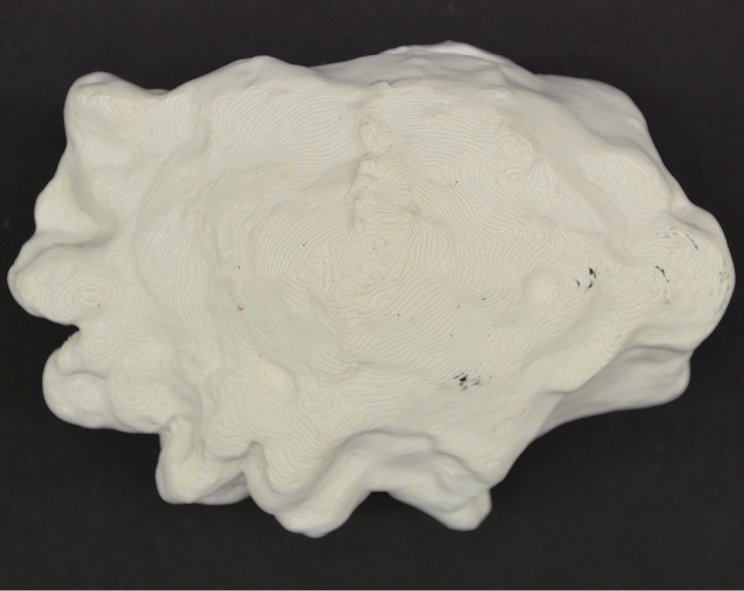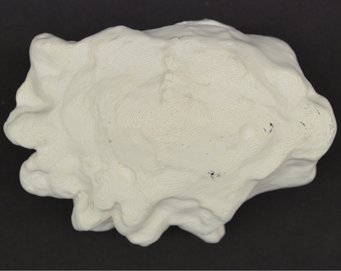Artificial hail for more accurate weather forecasts
Vertical wind tunnel at Mainz University supplies important data to facilitate the prediction of heavy rain, hail, and graupel precipitation
JOINT PRESS RELEASE OF THE MAX PLANCK INSTITUTE FOR CHEMISTRY AND JOHANNES GUTENBERG UNIVERSITY MAINZ
When the low-pressure system dubbed Bernd decided to park itself over part of Central Europe in the summer of 2021, the hazards associated with excessive rainfall events were made dramatically apparent in the form of the resultant catastrophic flooding. Weather records show that extreme natural occurrences such as drought, but also heavy rainfall and hail storms, are likely to occur even more frequently in this part of the world as a result of climate change. And their consequences could become even more devastating. Hailstones, for example, can cause damage to crops, vehicles, and buildings and they can be dangerous for exposed humans and animals, too. It is thus all the more important that weather models are capable of most accurately predicting the possibility and extent of any such precipitation. For this, numerical weather models must be based on precisely formulated mathematical interpretations of the physical processes in clouds.

The vertical wind tunnel at Johannes Gutenberg University Mainz (JGU), which is the only one of its kind in the world, is providing essential information in this connection through new experiments that are being conducted using artificial hailstones made by a 3D printer. "One thing we have learned so far is that it is the form of hailstones that determines their velocity prior to impact," explained Dr. Miklós Szakáll of the Institute of Atmospheric Physics (IPA) at JGU. Szakáll's team has been able to demonstrate that lobed hailstones develop less kinetic energy and thus less destructive potential than hail with a smooth surface.
Hail and graupel, which is the term used to describe precipitated small, soft ice pellets, are formed when water droplets freeze within storm clouds. This freezing process is promoted by turbulences and complex physical processes in these clouds that can extend to very high altitudes. These ice particles melt if they pass through warmer air layers on the way down. The result is large, cold raindrops and these are often the culprits behind extreme rainfall precipitation. Assuming that the ice particles do not have time to melt completely before reaching the ground, they arrive in the form of hail or graupel.
Experiments with natural and artificial hailstones
The conditions in the interior of clouds determine the characteristic form, size, and mass of these frozen droplets. "In our experiments with natural hailstones, we have seen that they melt to form raindrops that can be several millimeters in diameter. Large hailstones can also burst during the melting process, forming numerous small water droplets," Szakáll added. From the recorded measurements, his team was able to extrapolate parameters that they could use as the main elements for the numerical simulation of clouds and precipitation in computer models.
The research team in Mainz produced hailstones and graupel particles from frozen water in the lab. Employing realistic temperature and humidity conditions, the researchers looked closely at how these fell or melted in the vertical wind tunnel. In addition, they used a 3D printer to create artificial hail and graupel pellets modeled on their natural counterparts – even the material density corresponded with that of ice. They used these to measure the free fall properties of the descending objects, factors that are particularly relevant to the microphysical processes in extreme precipitation events.
The hail and graupel pellets were suspended freely in an artificially produced vertical air stream in the six-meter high wind tunnel. Their behavior was recorded using high speed and infrared cameras and a specially developed holographic imaging system.
"If we apply the insights into microphysical aspects of precipitation we have obtained through these experiments to models used for the analysis of storm clouds, we can better anticipate what they will do," explained Professor Stephan Borrmann of the IPA and Director at the Max Planck Institute for Chemistry. "This becomes particularly significant in view of the probable increase in extreme weather events, such as drought and torrential rainfall, that will occur even in our part of the world due to climate change," emphasized Borrmann.
The experiments in Mainz were undertaken under the aegis of the HydroCOMET project sponsored by the German Research Foundation (DFG). The results have been published in five peer-reviewed journals and as a book contribution.
The experts reviewing the HydroCOMET findings provided very positive assessments of the lab experiments performed in Mainz and the associated publications. They particularly stressed the important role played by the available infrastructure, i.e., the vertical wind tunnel.
Publications:
A. Theis et al., Vertical wind tunnel experiments and a theoretical study on the microphysics of melting low-density graupel, Journal of Atmospheric Sciences, 31 December 2021,
DOI: 10.1175/JAS-D-21-0162.1
https://journals.ametsoc.org/view/journals/atsc/aop/JAS-D-21-0162.1/JAS-D-21-0162.1.xml
A. Theis et al., Melting of atmospheric ice particles. In: Precipitation Science – Measurement, Remote Sensing, Microphysics and Modeling, Ed: Silas Michaelides. p. 870,
Paperback ISBN: 9780128229736, eBook ISBN: 9780128229378, Elsevier, 2021
A. Theis et al., A Wind Tunnel Investigation into the Aerodynamics of Lobed Hailstones, Atmosphere 11: 5, 494, 12 May 2020
DOI: 10.3390/atmos11050494
https://www.mdpi.com/2073-4433/11/5/494
Images:
https://download.uni-mainz.de/presse/08_physik_atmosphaere_hydrocomet_mpic_01.jpg
A rimed ice particle, in this case a graupel pellet, created for experimental use in the Mainz vertical wind tunnel.
photo/©: Alexander Theis/JGU
https://download.uni-mainz.de/presse/08_physik_atmosphaere_hydrocomet_mpic_02.jpg
Water being released from a melting hailstone suspended in the air current of the wind tunnel.
photo/©: Alexander Theis/JGU
https://download.uni-mainz.de/presse/08_physik_atmosphaere_hydrocomet_mpic_03.jpg
The experimental section of the wind tunnel
photo/©
https://download.uni-mainz.de/presse/08_physik_atmosphaere_hydrocomet_mpic_04.jpg
An artificial hailstone made with the help of a 3D printer. Its density is identical to that of a natural hailstone.
photo/©: Alexander Theis/JGU
Read more:
